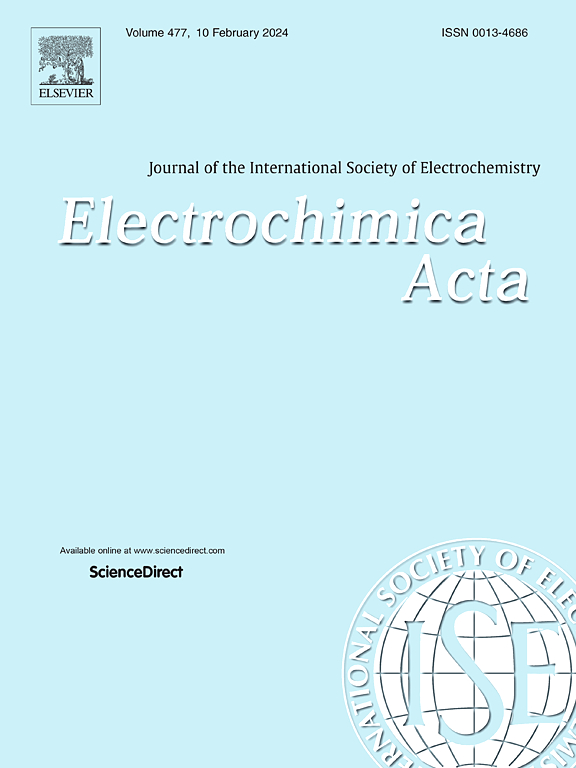Linker engineering in covalent organic polymers for enhanced electrocatalytic carbon dioxide reduction
IF 5.5
3区 材料科学
Q1 ELECTROCHEMISTRY
引用次数: 0
Abstract
Covalent organic polymers (COPs) are promising platforms for electrocatalytic carbon dioxide reduction reaction (CO2RR) due to their tunable structures and designable functionality. Among the various structural parameters of COPs, the molecular configuration of linkers plays a critical role in determining catalytic activity. However, studies exploring linker isomerism to modulate the physicochemical properties and catalytic behavior of COPs remain limited. Herein, we reported a linker isomerism strategy to tailor the electronic structure and CO2RR performance of COP-based electrocatalysts. Specifically, COP-o, constructed from 1,10-phenanthroline-2,9-dicarbaldehyde (with ortho-positioned aldehyde groups), exhibited a more favorable cobalt electronic environment and accelerated electron transfer compared to its para-isomeric counterpart, COP-p, derived from 1,10-phenanthroline-4,7-dicarbaldehyde. Theoretical calculations further revealed that COP-o facilitated *COOH adsorption and CO desorption. Consequently, COP-o achieved a CO Faraday efficiency of 98% and a partial CO current density of −12.28 mA cm−2 at −0.76 V (vs. RHE). This work underscores the pivotal role of linker isomerism in modulating the metal coordination environment and electron transfer within the COP frameworks, offering valuable insights for the rational design of highly efficient CO2RR electrocatalysts.

共价有机聚合物中用于增强电催化二氧化碳还原的连接体工程
共价有机聚合物(cop)由于其结构可调和功能可设计而成为电催化二氧化碳还原反应(CO2RR)的理想平台。在cop的各种结构参数中,连接体的分子构型对催化活性起着至关重要的作用。然而,关于连接体异构调节cop的物理化学性质和催化行为的研究仍然有限。在此,我们报道了一种连接体异构策略来定制基于cop的电催化剂的电子结构和CO2RR性能。具体来说,与1,10-菲罗啉-4,7-二乙醛衍生的对异构体COP-p相比,由1,10-菲罗啉-2,9-二乙醛(与邻位醛基团)构建的COP-o具有更有利的钴电子环境和加速的电子转移。理论计算进一步表明,CO -o有利于*COOH的吸附和CO的脱附。因此,CO -o在- 0.76 V(相对于RHE)下实现了98%的CO法拉第效率和- 12.28 mA cm - 2的部分CO电流密度。这项工作强调了连接体异构在调节COP框架内金属配位环境和电子转移中的关键作用,为高效CO2RR电催化剂的合理设计提供了有价值的见解。
本文章由计算机程序翻译,如有差异,请以英文原文为准。
求助全文
约1分钟内获得全文
求助全文
来源期刊

Electrochimica Acta
工程技术-电化学
CiteScore
11.30
自引率
6.10%
发文量
1634
审稿时长
41 days
期刊介绍:
Electrochimica Acta is an international journal. It is intended for the publication of both original work and reviews in the field of electrochemistry. Electrochemistry should be interpreted to mean any of the research fields covered by the Divisions of the International Society of Electrochemistry listed below, as well as emerging scientific domains covered by ISE New Topics Committee.
 求助内容:
求助内容: 应助结果提醒方式:
应助结果提醒方式:


